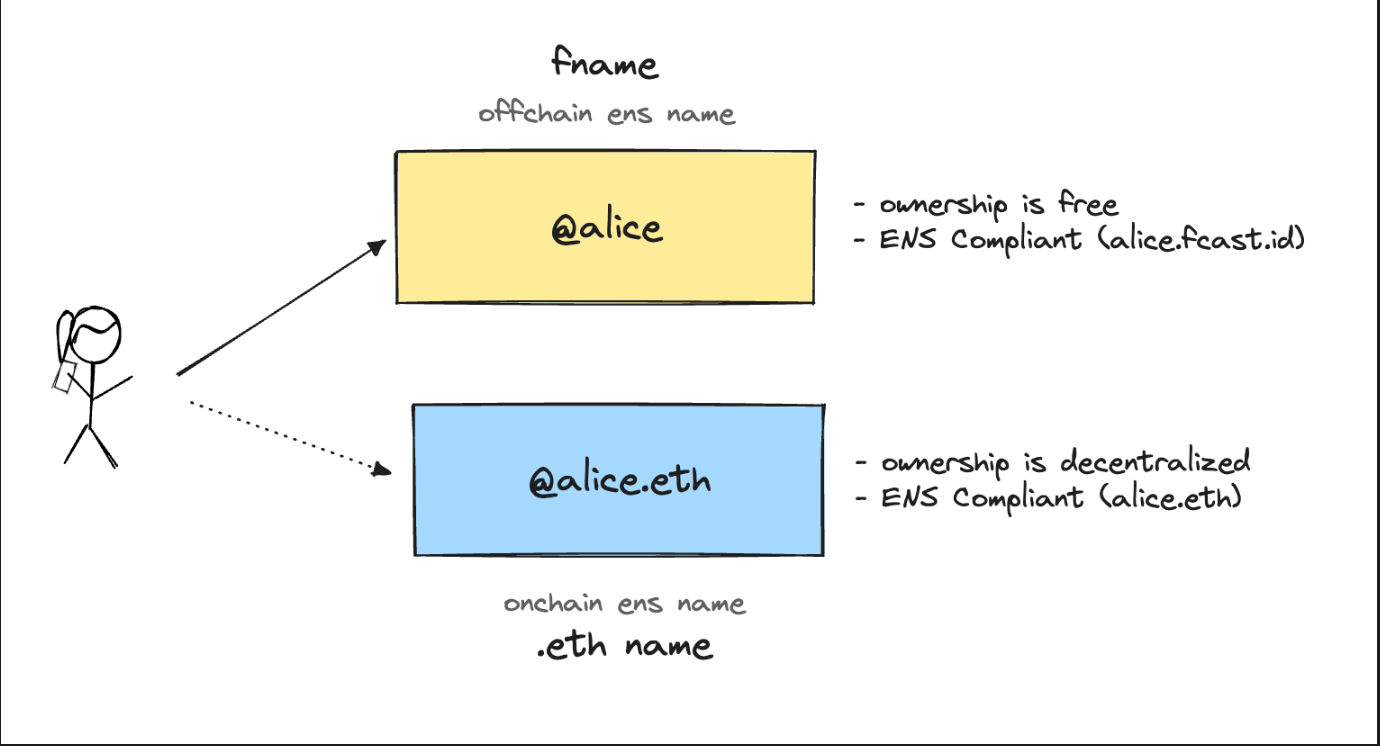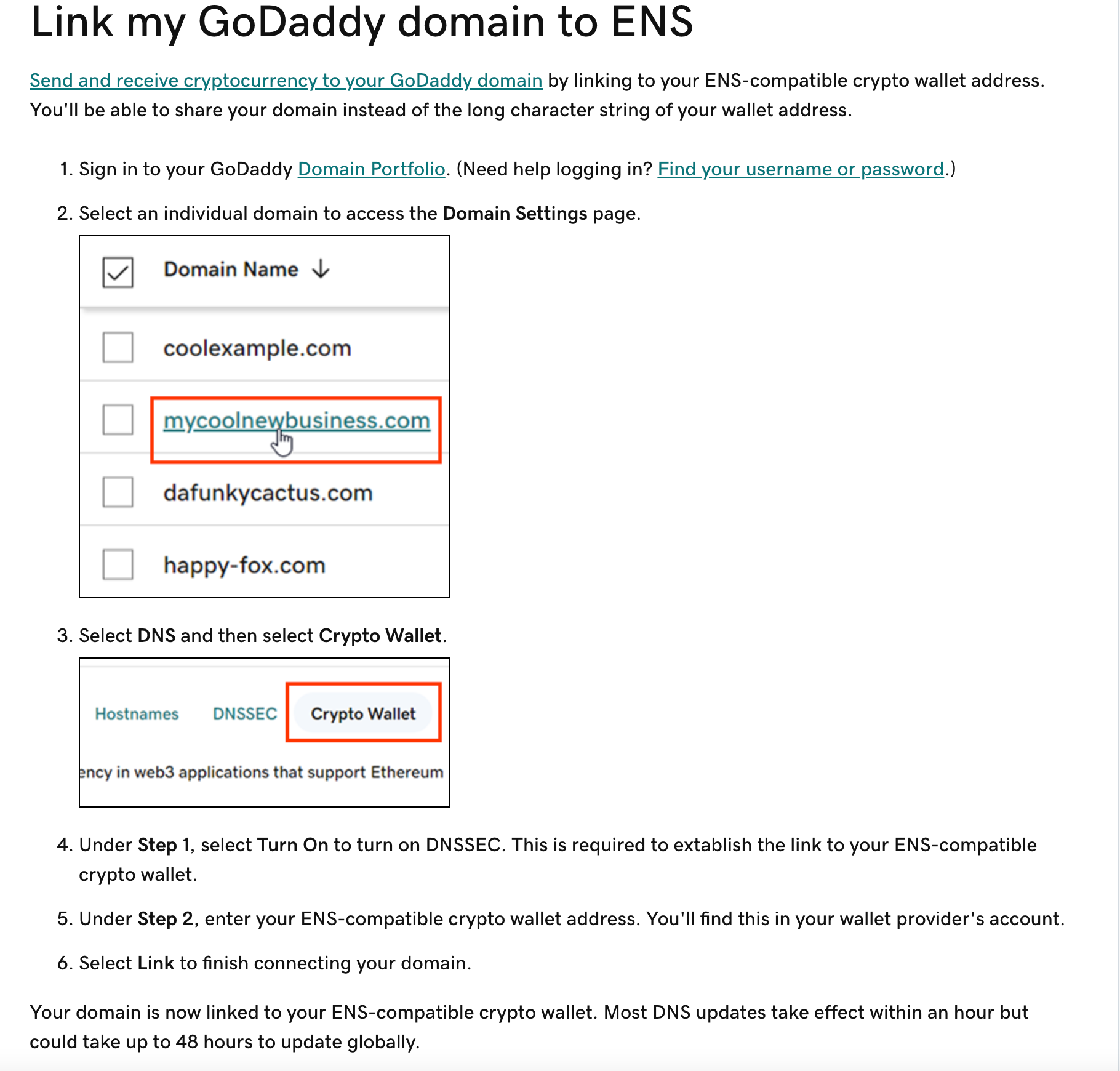What is ENS or Ethereum Name Service | The importance of human-readable addresses
The Ethereum Name Service (ENS) makes it possible to convert blockchain addresses, which are long strings of letters and numbers, into a human-readable format. This makes it easier to build web3 apps and services.

It feels like there is a sudden synergistic convergence of ideas and products happening in the decentralized computing space. In a lot of ways, it feels like, after years of building in a somewhat siloed space, the standalone parts are not meshing together to create something that is starting to feel cohesive.
Take, for example, the idea of Ethereum Name Service (ENS) and the public launch of Farcaster (which is covered more in the previous post linked below).

We’ll get into what ENS is and its significance in a minute, but the larger context here is that it finally is starting to feel like web3 apps and services are gearing up for the next wave of adoption. No longer bespoke projects, the space is starting to feel like an ecosystem.
Like, for example, if I have a profile already set up with ENS, then using Farcaster becomes way more interesting because I can engage with NFTs and participate in airdrops. At the same time, I might be curious about Farcaster and start using it with a basic identity, but that leads me to ENS, and essentially onboarding to the wider world of web3 control and data ownership.

To further illustrate the idea that so far 2024 is feeling like it might turn out to be a web3 inflection point, ENS just announced a partnership with the traditional domain name provider GoDaddy. The partnership makes domain name service (DNS) compatible with ENS, meaning a domain name, like danielmcglynn.com for example, could become a web3 handle or profile.
The value of ENS and move to use a name as a key
To understand the utility of ENS it’s important to understand the two main problems that ENS solves. The solutions to these two problems are foundational for web3 and so solving them is significant.
Problem one: Human-to-human
The first problem that ENS solves is converting blockchain native addresses, which are long strings of letters and numbers into something easy to remember, like an email address or social handle.
Here’s an Ethereum address: 0x52315c00aC7d7325856c5954a460fc25497F25C5
And here’s an ENS address: danielmcglynn.eth.
Both those addresses map to the same ID (me), but the ENS handle is way easier to use. It’s easier for me to remember, it’s easier for me to share, and it’s easier for people entering into a wallet to send me funds.
On the other end, I can connect a wallet to that address so that if people send me ETH, it will arrive somewhere.
The ability to use human-readable addresses to interact with crypto and blockchain makes those systems way more accessible and approachable to more people. Over time, abstracting crypto keys so that the system becomes more seamless and provides a better user experience will only continue, but making addresses readable is a necessary first step.
Own your profile
The second problem or issue that ENS solves is that it allows people to own their profile. The idea of data and identity ownership from the level of individual profile changes the dynamics of how the internet works.
It also opens possibilities like “Sign in with Ethereum” instead of “Sign in with Google” or “Sign in with Facebook” or whatever. This is a necessary step on the road to wider decentralization.
By having a fully owned identity that can be used to access the rest of the internet helps to make the data and other identifying details associated with that profile portable, or at least in the control of the owner of the ID holder.
Extrapolated, the idea of user control and ownership will make the internet way more interesting. It also enables new kinds of web3 applications and services. Instead of needing layers of authentication, protocols, and apps (like the Farcaster example mentioned earlier) can opt to use ENS as a means of authenticating users without needing lots of identifying details.
This arrangement is better for service providers and is better for end users.
ENS mappings to traditional Domain Name Service
Another big trend that seems to be echoing around the internet is how to integrate alternative systems with mainstream systems in a mutually beneficial way.
The recent launch of the Bitcoin ETF is one example.

Before the ETF, Bitcoin was viewed as a competitor or at least a financial option outside of the traditional system. Now, given the launch of the ETF and the record-setting inflows, the relationship between Bitcoin and the rest of the financial system feels less competitive somehow, and more mutualistic. Continued institutional interest will likely only reinforce that sentiment.
The same kind of trend applies to ENS. Until this week, ENS felt very much an alternative — the web3 version — of the traditional credentialing system of the corporate-controlled internet.
But then GoDaddy, one of the largest providers of traditional Domain Name Services (it’s where you buy a domain like danielmcglynn.com and connect it to a content management system) announced a partnership with ENS to make it possible to link a crypto wallet to a traditional internet domain by using Ethereum Name Service.
So, following the example from the section above, instead of giving people my .eth handle, I could just use danielmcglynn.com to accept payments or direct inbound web3 activities.

This takes the idea of human readability to the next level. Now people don’t even have to remember the basics of a .eth address, they just need to remember a domain.
Maybe this doesn’t have a lot of utility for people who don’t own a domain or have much of an internet presence. Maybe for them, a simple .eth address is sufficient. But for brands or for people that have spent years building out a presence online, then being able to map traditional internet handles and footprints to web3 will be useful and valuable, especially when soliciting payments or user interactions.
Last thing, this partnership and the ease of onboarding to Farcaster via ENS (or vice-versa) goes to show how the rest of the internet will get onboarded.
Now that web3 systems have full-fledged value propositions and utility that feel intituive and more efficient than older web2 counterparts, it feels like web3 apps and services are positioning for big growth.